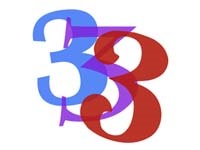
Three Reasons to Use the Rule of Three in Your Speeches
Important Notice: Our web hosting provider recently started charging us for additional visits, which was unexpected. In response, we're seeking donations. Depending on the situation, we may explore different monetization options for our Community and Expert Contributors. It's crucial to provide more returns for their expertise and offer more Expert Validated Answers or AI Validated Answers. Learn more about our hosting issue here.

Three Reasons to Use the Rule of Three in Your Speeches
You must be logged in to post a comment.
A person can survive only three minutes without air, three days without water, and three weeks without food. When you give cheerfully, you get back three times as much. Knock three times on the ceiling if you want me. Three, it seems, is a magical number.
Many studies have shown that things coming in threes are more satisfying, more humorous, and easier to remember. Most comics have three panels. There were three bears, three pigs, three Billy Goats Gruff. We buy houses because of location, location, location. We want life, liberty, and the pursuit of happiness.
From Shakespeare to Cosmo magazine, the magic rule of three is used to embed ideas into our brains because it works.
#1 Stronger speech writing
Your speech should have only three main points. Any more, and your audience’s brains fall out. I believe that the whole zombie phenomenon started during a presentation with 10 points. Yes, those top 10 lists are fun – but no one remembers numbers 4 through 10. That’s why there are only three medals in the Olympics.
Yes, there are several examples of effective usage of twos and fours – but how effective? Often quoted is Churchill’s ditty about “blood, toil, tears, and sweat,” but what do we remember, and what part of that quote became the name of a classic rock band? Blood, Sweat & Tears. If you try to look up the history of this phrase, you’ll toil to find the toil. It seems the rule of three forces its nature even on the best-known phrases.
If you are giving an informational speech, Dale Carnegie’s suggestion of, “Tell them what you’re going to tell them, tell them, then tell them what you told them” reigns supreme. Introduction, Body, Conclusion. Rule of three.
If you are giving a motivational speech, this pattern changes to Opening, Points (or stories), Takeaway (or call to action). Rule of three.
If you are telling a story or giving a speech based on a story (or stories), keep in mind that the most effective and memorable stories use the Three Act Structure. From Star Wars to any fairy tale, you’ll find the pattern: Setup-Confrontation-Resolution.
When selling a product, use Pros-Cons-Recommendations.
The more you structure, rewrite, and practice your speech, the more you’ll find it naturally falls into a pattern of threes. Even if you’re giving an all-day workshop, section it out into groups of three and see if it isn’t more effective, engaging, and easy to remember.
#2 Funnier punchlines
Three is also the magic number in comedy, and definitely a tool you want to use to keep your audience engaged in your presentations. Improv actors use this without even thinking. In fact, we joke about how a scene is undone – and the audience will egg us – unless an anomaly repeats the third time. If someone complains about too many farm animals, you better believe that the rooster and the cow will be followed by a third, annoying animal.
Using the rule of three, you can set up two normal statements and a twist to get a laugh almost every time. In my speech, The Snuggie Debacle, I talk about the exotic locations from which we lure our spouses: Madrid, Sydney, Los Angeles. Gets a laugh every time. Not because LA is funny, but because it’s unexpected.
#3 More effective PowerPoint
Three is also a good rule to stick to when creating your slides. No more than three bullet points on a slide. I would take it further and say no more than three words on a slide (but I’d also say no words at all, if you can get away with it). When it comes to PowerPoint, less is more, and three is your most.
To finish, sum up, and conclude
When writing your speech, remember your goal is to invite audiences to think, feel, or act. There’s that three again! To most effectively move them to do anything, make your speech memorable and easy to follow by employing the rule (often declared law) of three.